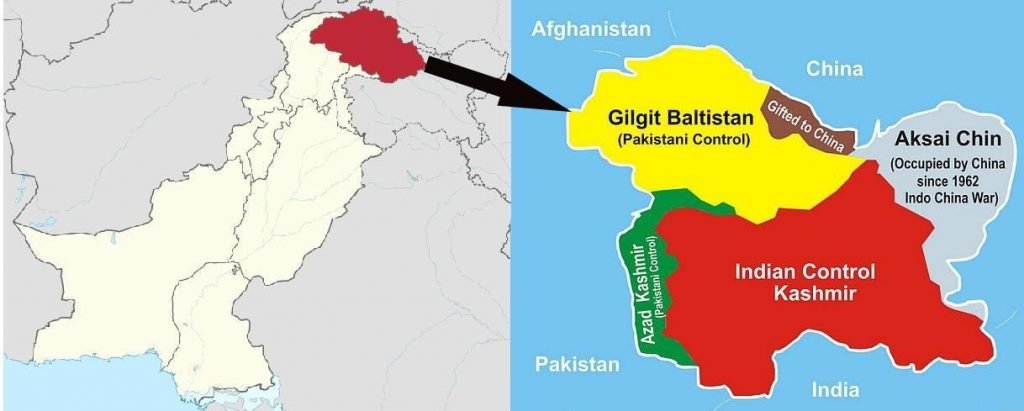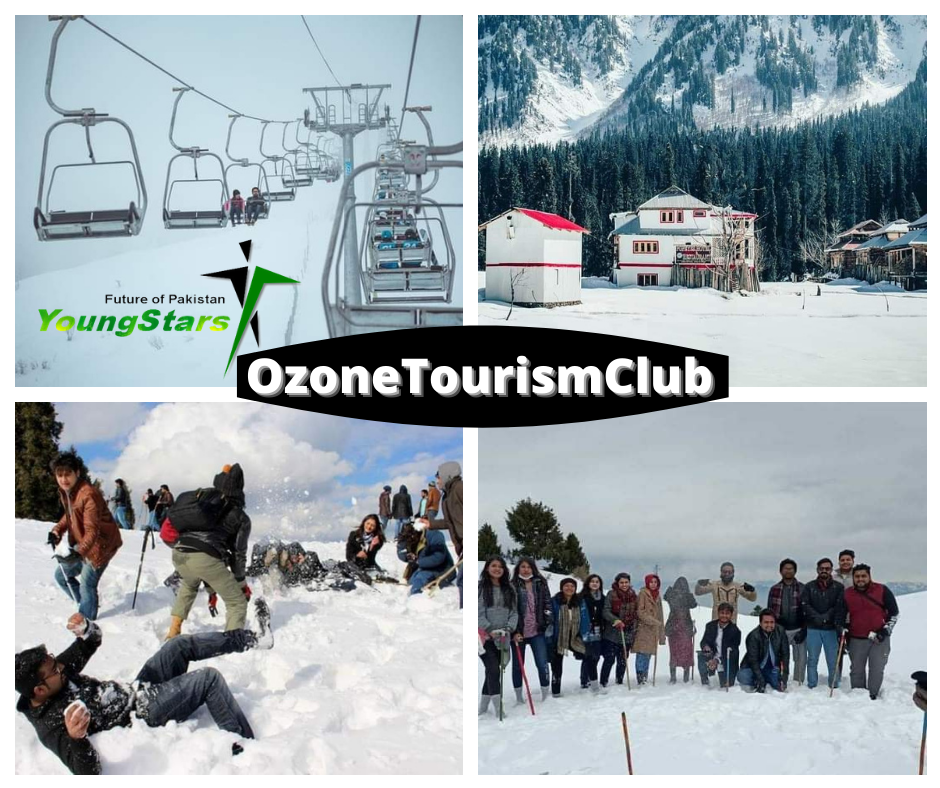
Gilgit-Baltistan
Gilgit-Baltistan is as for as known as the Federally Administered Northern Areas or FANA. It is the northernmost political thing within Pakistan. According to the Constitution of Pakistan, Gilgit-Baltistan is an autonomous region under Pakistan. Gilgit-Baltistan is home to some of the world’s highest mountains, including five out of eight thousand. The focus of many travelers is the world’s three highest mountain ranges. The Karakoram, the Himalayas, and the Hindu Kush, with peaks of over 8000 meters and peaks of over 7000 meters. The largest glaciers were in the world except in the polar region. Wild rivers and unique scenery make the area a “mountain paradise” for climbers, trekkers, and tourists.
Regions
Gilgit Baltistan is administratively divided into three parts. Baltistan, Diamer, and Gilgit, which in turn are divided into fourteen districts. The main administrative centers are the towns of Gilgit and Skardu. Division District Area (km²) Capital Population (2013) Divisional Capital Baltistan Ghanche 4,052 Khaplu 108,000 Skardu Shigar 8,500 Shigar – Kharmang 5,500 Kharmang – Skardu 8,700 Skardu 305,000* Roundup NA Dambudas NA Gilgit Gilgit 14,672 Gilgit 222,000 Gilgit Ghizer 9,635 Gahkuch 190,000 Hunza 7,900 Aliabad 70,000 (2015) Nagar 5,000 Nagar 51,387 (1998) Gupis–Yasin NA Ishkoman NA Diamer Diamer 10,936 Chilas 214,000 Chilas Astore 5,092 Eidghah 114,000 Darel NA Tangir NA Tangir NA
Areas
Gilgit-Baltistan, formerly known as the Northern Areas. An administrative region is administered by Pakistan. The forms of the northern part of the vast Kashmir region. That case has been the dispute between India and Pakistan since 1947. It has been the subject of controversy. The northernmost territory is administered by Pakistan. It is bordered by Azad Kashmir in the south, Khyber Pakhtunkhwa in the west, Afghanistan’s Wakhan Corridor in the north, China’s Xinjiang region by east and northeast, and Indian-administered central Jammu and Kashmir and Ladakh in the southeast.
Gilgit-Baltistan is part of the greater Kashmir region. Which is the subject of a long-running conflict between Pakistan and India. The territory shares a border with Azad Kashmir, which is referred to as the “Pakistan administered Kashmir” ” by the United Nations and other international organizations. The region also meets the Indian-administered union territories of Jammu and Kashmir (Central Territory) and Ladakh in the south and is separated from it by the Line of Control, which is the border between India and Pakistan.
The present Gilgit-Baltistan region became a separate administrative unit in 1970 called the “Northern Areas”. It was formed from a coalition of the former Gilgit Agency, Baltistan District, and several smaller former states, the larger of which being mostly Hunza and Nagar. In 2009, it gained limited autonomy and was renamed Gilgit-Baltistan through a self-governance order signed by President Asif Ali Zardari, which aimed at empowering the people of Gilgit-Baltistan. However, scholars state that the real power rests with the governor and not with the chief minister or the elected assembly. The majority of Gilgit-Baltistan’s population wants to be merged with Pakistan as a separate fifth province and opposes an alliance with Kashmir. The Pakistani government has rejected Gilgit-Baltistan’s demand for integration with Pakistan because it would jeopardize its demands for a solution to the Kashmir issue following UN resolutions. However, in November 2020, Pakistani Prime Minister Imran Khan announced that Gilgit-Baltistan would gain temporary provincial status after the 2020 Gilgit-Baltistan Assembly elections, being a long-standing demand of the people of Gilgit-Baltistan.
Gilgit-Baltistan covers an area of more than 72,971 km2 (28,174 sq mi) and is extremely mountainous. Its estimated population was 1.249 million in 2013 (estimated at 1.8 million in 2015 by Shahid Javed Burki). Its capital city is Gilgit (population 216,760 Est) Gilgit-Baltistan is home to five of the “eight thousanders” and more than fifty peaks above 7,000 meters (23,000 ft). Outside the polar regions, the three longest glaciers in the world are found in Gilgit-Baltistan. The main activities of tourism are trekking and mountaineering and the importance of this industry are increasing.
Map

Tourism in Gilgit-Baltistan
Tourism in Gilgit-Baltistan, an administrative body of Pakistan, focuses on the mountains. Gilgit Baltistan is home to five of the “eight-thousanders” and more than fifty peaks above 7,000 meters (23,000 ft). Gilgit and Skardu are the two main centers for expeditions to those mountains. The territory is home to some of the world’s highest mountain ranges. The Pamir Mountains are to the north, and therefore the Hindu Kush lies to the west. Amongst the very best mountains are K2 (Mount Godwin-Austen) and Nanga Parbat, the latter being one among the foremost feared mountains within the world.

Outside the polar regions, the three longest glaciers in the world are found in Gilgit-Baltistan: Biafo Glacier, the Baltoro Glacier, and Batura Glacier. Also, there are several high lakes in Gilgit-Baltistan.
Karakoram Highway
The Karakoram Highway is the main highway in Gilgit-Baltistan, connecting Gilgit-Baltistan with the rest of southern Pakistan and its northern tip to china. It is also called the eighth wonder of the world. It is the smoothest road in the world connecting the major valleys of the region.
Major valleys
Gilgit-Baltistan is home to the highest and most beautiful valleys in the world. These include Hunza Valley, Skardu, Nagar Valley.
Hunza Valley
Hunza Valley is the most beautiful valley in Gilgit-Baltistan. It consists of Upper Hunza, Central Hunza, and Lower Hunza. Karim Abad is an important city in the valley and has all the facilities for climbers and tourists.
Major tourist attractions in Hunza are:
Attabad lake
Lake Attabad is the largest lake in the Hunza Valley. It was made on January 4, 2010, during a landslide in the Hunza River near the village of Attaabad.
Baltit Fort
Balt Fort is an ancient medieval fort located in Karimabad. It is also a UNESCO World Heritage Site.
Hussaini Suspension Bridge
The Hussaini Bridge is a wooden suspension bridge over the Hunza River near the village of Husseini. It is also called the Indiana Jones Bridge. It is considered one of the most dangerous bridges in the world. Tourists take oi as a challenge to cross the bridge.
Lakes
- Sheosar Lake in Deosai National Park, Skardu
- Satpara Tso Lake in Skardu, Baltistan
- Katzura Tso Lake in Skardu, Baltistan
- Katpana Lake in Skardu, Baltistan
- Zharba Tso Lake in Shigar, Baltistan
- Phoroq Tso Lake in Skardu, Baltistan
- Lake Kharfak in Gangche, Baltistan
- Sozgung Lake in Thalay Valley, Baltistan
- Byarsa Tso Lake in Gultari, Astore
- Borith Lake in Gojal, upper Hunza, Gilgit
- Rama Lake near Astore
- Rush Lake near Nagar, Gilgit
- Karambar Lake at Kromber Pass Ishkoman Valley, District Ghizer
- Barodaroksh Lake in Bar Valley, Nagar
- Ghorashi Lake in Ghandus Valley, Kharmang
- Attabad Lake, Hunza
- Khalti Lake, Ghizer
Mountains
Eight-thousanders
- K2 (Mount Godwin Austin/Chogori)
- Nanga Parbat
- Gasherbrum l
- Broad Peak
- Gasherbrum ll
Seven-thousanders
- Gasherbrum lll
- Gasherbrum lV
- Masherbrum (K1)
- Rakaposhi
- Saltoro Kangri (K10)
Languages of Gilgit-Baltistan
Urdu is Pakistans national language. And throughout Pakistan and in Gilgit-Baltistan, the language is spoken as Franca. The local languages are Sheena, Balti, Khawar, Waki, and Brushaski. As in Pakistan itself, English is widely spoken among the educated classes. People associated with the tourism industry.
- Balti language
- Burushaski
- Domaaki language
- Gujari language
- Khowar language
- Ladakhi language
- Ladakhi–Balti languages
- Purgi language
- Shina language
- Wakhi language
Districts of Gilgit–Baltistan
By 2019, Gilgit-Baltistan had ten districts, Four in Baltistan Division, four in Gilgit Division, and two in Diamer Division. After the addition of 2 districts in Baltistan Valley, the number increased from seven to ten in 2016. Distribution of Hunza Nagar District Each district has been further divided into Tehsils and Union Councils. In 2019, Darel, Tangir, Gupis Yasin, and Roundup were erected into new districts.
- Diamir
- Ghanche
- Ghizer
- Gilgit
- Hunza-Nagar
- Skardu
Hunza Valley
Hunza is a mountain valley in the Gilgit-Baltistan (GB) Autonomous Region of Pakistan. Hunza is located in the northern part of Gilgit Baltistan, Pakistan, bordering Khyber Pakhtunkhwa (KPK). The west and the Xinjiang region of China to the northeast.
The Hunza Valley is at an elevation of 2,438 meters (7,999 feet). Geographically, Hunza Valley consists of three regions. Upper Hunza Valley (Gojal), Central Hunza (“Hunza Valley”), and Lower Hunza (“Shinkai”).
History of Hunza Valley
The former residence of the Mirs of Hunza, Baltit Fort
The earliest history of the valley of Hunza can be traced to the ancient Indian epic Mahabharata. During the Mahajanapada era of ancient India, the area came under. Influence of several large ancient Indian states, especially the states of Kapisa, Gandhara, and possibly Magadha. Buddhism came to the valley of Hunza in the early centuries AD.
Buddhism and Bon, to a lesser extent, were the main religions in the area. The region has several surviving Buddhist archaeological sites. Such as the Sacred Rock of Hunza. Nearby are former sites of Buddhist shelters. Hunza valley was central as a trading route from Central Asia to the subcontinent. It also provided shelter to Buddhist missionaries and monks. who were visiting the subcontinent, and the region played a major role in the transmission of Buddhism throughout Asia.
Before the advent of Islam in the region, the region was Buddhist-majority until the 15th century. Since then, most people have converted to Islam. The presence of Buddhism in the region is now limited to archeological sites. The rest of the Buddhists in the region moved to Leh in the east, where Buddhism is the predominant religion. There are much graffiti works in the ancient Brahmi script inscribed on the rocks in this area. Which were made by Buddhist monks. As a form of worship and culture. The majority of the local people converted to Islam. They were largely ignored, destroyed, or forgotten. But now they are recovering
Hunza was formerly an imperial state bordering China’s Xinjiang Autonomous Region. Northeast and the Pamirs in the northwest, which survived until 1974. When it was finally dissolved by Zulfiqar Bhutto. The state is bordered by Gilgit Agency in the south and the former Sultanate of Nagar in the east. The state capital was the town of Baltit another old settlement is Ganish Village. Which means “ancient gold” village. Hunza was an independent kingdom for more than 900 years. Even the British overcame it. Neighboring valley of Nagar between 1889 and 1891 from military conquest. Safdar Khan of Hunza, a branch of the Katur Dynasty, fled to Kashgar in China. And tried to do what would now be called political asylum.
Mir/Tham
The ruling family of Hunza is called Ayesha. The two states of Hunza and Nagar were formerly one, ruled by a branch of the Shahrei. The ruling family of Gilgit Baltistan, whose seat of government was Nagar. The first Muslim came to the Hunza Nagar valley some 1000 years later (during the time of Imam Islami Shah the 30th Ismaili Muslims). After his introduction to Islam in Gilgit, he married the daughter of Tarkhan of Gilgit. The one who gave birth to her twin sons is named Moglot and Gerkis. From the former, the present Nagar is a descendant of the ruling family. The twins are said to have been hostile to each other from birth. After that, his father, failing to resolve the question of succession, divided his kingdom among himself and gave it to the Greeks. North/west, and south / east bank of the river to Moghlot.
2010 Landslide
On January 4, 2010, a landslide blocked the river. Lake Attabad, also known as Lake Shashkat. killed 20 people and injured eight and effectively blocked about 26 km (16 miles) of the Karakoram Highway. The new lake stretches for 30 km (19 miles) and reached a depth of 400 feet (120 m). When it was formed to support the Hunza River. The Karakoram Highway was completely covered by the landslide.
2018 Rescue mission
On 1 July 2018, Pakistan Army pilots in a daring mission rescued 3 foreign mountaineers stuck in a snow avalanche above. Dangerous weather conditions at 19,000 feet (5,800 m) above Altar Sar peak near Hunza made it difficult. The army helicopter will proceed with the rescue operation at 7,388 meters (24,239 feet) high altar head. But they did it. Bruce Normand and Timothy Miller were successfully rescued. While their companion Christian Huber from Austria had succumbed to an avalanche.
People
Local languages spoken include Burushaki, Waki, and Sheena. Hunza has a literacy rate of over 95%. The historic area of Hunza and present-day northern Pakistan is gone. Centuries, mass migration, conflicts, and settlement of tribes and races. What is the significance of Dardak Sheena Race in regional history. The people of the region have passed on their historical traditions from generation to generation. There are also some walkies in the Hunza Valley. Who migrated there from northeastern Afghanistan, beginning in the 19th century.
The longevity of the Hunza people has been noted by some. But others deny the myth of longevity because of the unavailability of birth records. There is no evidence that Hunza is older than expected. The average of Pakistan’s poor, isolated areas. Claims of health and longevity were almost always based solely on the statements of the local mir (king). According to John Clark, an author who had important and constant contact with the people of Burshu. That they were unhealthy overall.
Skardu Fort
Skardu Fort or Kharpocho means. King of Forts is a fort in the city of Skardu in the Gilgit-Baltistan region of Pakistan. Australian mountaineer and filmmaker Greg Child writes. That the fort “stands at the confluence of rivers “Theoverlooks Rock of Skardu.
History
The fort was built by Shah Ali Sher Khan Anchan in the late 16th century. General Zonur Singh of the Dogra Rajput tribe, working under Maharaja Gulab Singh, realised the areas of Baltistan to the princely state of Jammu and Kashmir. The fort was demolished in 1857 under the guidance of Ranbir Singh. The Mughal emperor Aurangzeb also tried to capture the fort, which was in vain.
First Kashmir War
During the First Kashmir War in 1947, Jammu and Kashmir State Forces were deployed inside the fort under the command of Lt. Col. Sher Jung Thapa. On February 11, 1948, Pakistani forces fought the Skardu garrison of the fort. After a six-hour battle, the assailants retreated. He returned on February 14, instructing to “harass the fire in the castle.” The siege lasted more than six months. Eventually, when the ammunition and rations ran out, Kashmiri forces left the fort in small huts on August 13, 1948. The fort died on August 14. All the others were reportedly killed by the assailants, except for the colonel. Thapa and his Sikh orderly, who was taken, prisoner. Skardu became part of the Pakistan-controlled Kashmir, eventually renamed Gilgit-Baltistan.
Inside Pakistan
American climbers Robert Butts and Charles Houston write. When they visited the castle, they were given “passionate entertainment.”


![Best-and-Safe-Tourism-in-Gilgit-Baltistan-in-2021-in-the-age-of-coronavirus-youngstars.pk_ Best and Safe Tourism in Gilgit Baltistan in 2021 in the age of coronavirus [youngstars.pk]](https://youngstars.pk/wp-content/uploads/2021/01/Best-and-Safe-Tourism-in-Gilgit-Baltistan-in-2021-in-the-age-of-coronavirus-youngstars.pk_-696x583.png)


[…] Safe Tourism in Gilgit Baltistan in 2021 […]
[…] Safe Tourism in Gilgit Baltistan in 2021 […]
[…] Safe Tourism in Gilgit Baltistan in 2021 […]
[…] Safe Tourism in Gilgit Baltistan in 2021 […]
… [Trackback]
[…] Information on that Topic: youngstars.pk/2021/01/1580/safe-tourism-in-gilgit-baltistan-in-2021/ […]
… [Trackback]
[…] Read More here to that Topic: youngstars.pk/2021/01/1580/safe-tourism-in-gilgit-baltistan-in-2021/ […]
… [Trackback]
[…] Find More Info here on that Topic: youngstars.pk/2021/01/1580/safe-tourism-in-gilgit-baltistan-in-2021/ […]
… [Trackback]
[…] Here you can find 71393 more Info on that Topic: youngstars.pk/2021/01/1580/safe-tourism-in-gilgit-baltistan-in-2021/ […]
… [Trackback]
[…] Read More here to that Topic: youngstars.pk/2021/01/1580/safe-tourism-in-gilgit-baltistan-in-2021/ […]
… [Trackback]
[…] Here you will find 66991 more Information on that Topic: youngstars.pk/2021/01/1580/safe-tourism-in-gilgit-baltistan-in-2021/ […]
… [Trackback]
[…] Read More to that Topic: youngstars.pk/2021/01/1580/safe-tourism-in-gilgit-baltistan-in-2021/ […]
… [Trackback]
[…] Read More on to that Topic: youngstars.pk/2021/01/1580/safe-tourism-in-gilgit-baltistan-in-2021/ […]
… [Trackback]
[…] Info on that Topic: youngstars.pk/2021/01/1580/safe-tourism-in-gilgit-baltistan-in-2021/ […]
… [Trackback]
[…] Read More Information here on that Topic: youngstars.pk/2021/01/1580/safe-tourism-in-gilgit-baltistan-in-2021/ […]
… [Trackback]
[…] Read More Info here on that Topic: youngstars.pk/2021/01/1580/safe-tourism-in-gilgit-baltistan-in-2021/ […]
… [Trackback]
[…] Read More here to that Topic: youngstars.pk/2021/01/1580/safe-tourism-in-gilgit-baltistan-in-2021/ […]
… [Trackback]
[…] Information on that Topic: youngstars.pk/2021/01/1580/safe-tourism-in-gilgit-baltistan-in-2021/ […]
… [Trackback]
[…] Read More Information here to that Topic: youngstars.pk/2021/01/1580/safe-tourism-in-gilgit-baltistan-in-2021/ […]
… [Trackback]
[…] Read More Info here on that Topic: youngstars.pk/2021/01/1580/safe-tourism-in-gilgit-baltistan-in-2021/ […]
… [Trackback]
[…] Find More Information here on that Topic: youngstars.pk/2021/01/1580/safe-tourism-in-gilgit-baltistan-in-2021/ […]
… [Trackback]
[…] Find More to that Topic: youngstars.pk/2021/01/1580/safe-tourism-in-gilgit-baltistan-in-2021/ […]
… [Trackback]
[…] Information to that Topic: youngstars.pk/2021/01/1580/safe-tourism-in-gilgit-baltistan-in-2021/ […]
… [Trackback]
[…] Find More here to that Topic: youngstars.pk/2021/01/1580/safe-tourism-in-gilgit-baltistan-in-2021/ […]
… [Trackback]
[…] Read More to that Topic: youngstars.pk/2021/01/1580/safe-tourism-in-gilgit-baltistan-in-2021/ […]
… [Trackback]
[…] Find More here to that Topic: youngstars.pk/2021/01/1580/safe-tourism-in-gilgit-baltistan-in-2021/ […]
… [Trackback]
[…] Find More Info here on that Topic: youngstars.pk/2021/01/1580/safe-tourism-in-gilgit-baltistan-in-2021/ […]
… [Trackback]
[…] Read More Info here to that Topic: youngstars.pk/2021/01/1580/safe-tourism-in-gilgit-baltistan-in-2021/ […]
… [Trackback]
[…] There you will find 90847 additional Information on that Topic: youngstars.pk/2021/01/1580/safe-tourism-in-gilgit-baltistan-in-2021/ […]
… [Trackback]
[…] Find More Information here on that Topic: youngstars.pk/2021/01/1580/safe-tourism-in-gilgit-baltistan-in-2021/ […]